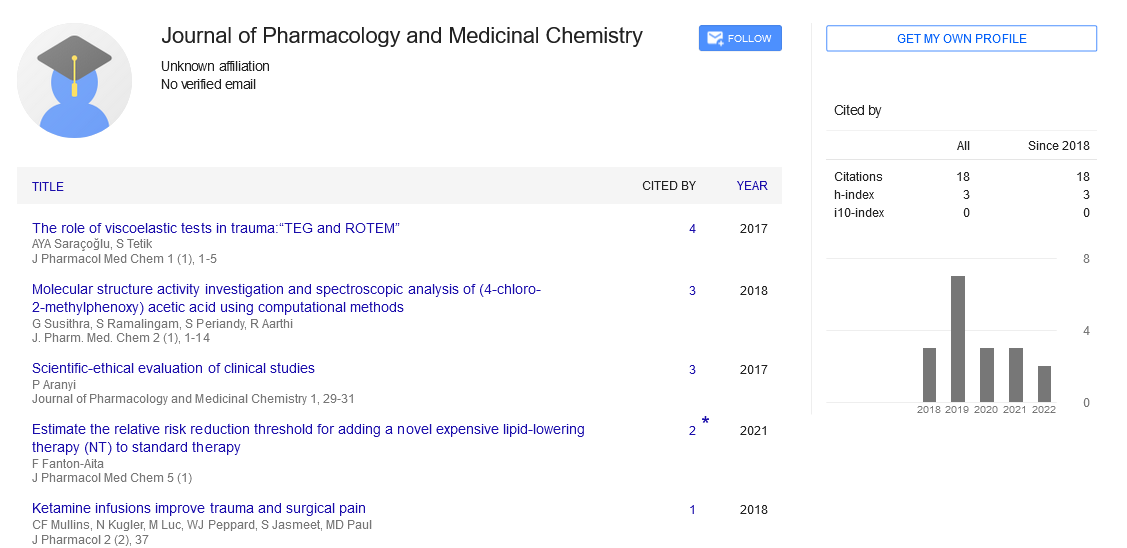Pharmaceutical manufacturing is the process of industrial-scale synthesis
Received: 01-Nov-2021 Accepted Date: Nov 16, 2021; Published: 23-Nov-2021
This open-access article is distributed under the terms of the Creative Commons Attribution Non-Commercial License (CC BY-NC) (http://creativecommons.org/licenses/by-nc/4.0/), which permits reuse, distribution and reproduction of the article, provided that the original work is properly cited and the reuse is restricted to noncommercial purposes. For commercial reuse, contact reprints@pulsus.com
Description
Pharmaceutical manufacturing is the process of industrial-scale synthesis of pharmaceutical drugs as part of the pharmaceutical industry. The process of drug manufacturing can be broken down into a series of unit operations, such as milling, granulation, coating, tablet pressing, and others. Cooling While a laboratory may use dry ice as a cooling agent for reaction selectivity, this process gets complicated on an industrial scale. The cost to cool a typical reactor to this temperature is large, and the viscosity of the reagents typically also increases as the temperature lower, leading to difficult mixing. This results in added costs to stir harder and replace parts more often, or it results in a non-homogeneous reaction. Finally, lower temperatures can result in crusting of reagents, intermediates, and byproducts to the reaction vessel over time, which will impact the purity of the product. Different stoichiometric ratios of reagents can result in different ratios of products formed. On the industrial scale, adding a large amount of reagent A to reagent B may take time. During this, the reagent A that is added is exposed to a much higher stoichiometric amount of reagent B until it is all added, and this imbalance can lead to reagent A prematurely reacting, and subsequent products to also react with the huge excess of reagent B Whether to add organic solvent into aqueous solvent, or vice versa, becomes important on the industrial scale.Depending on the solvents used, emulsions can form, and the time needed for the layers to separate can be extended if the mixing between solvents is not optimal. When adding organic solvent to aqueous, stoichiometry must be considered again, as the excess of water could hydrolyze organic compounds in only mildly acidic or basic conditions. In an even wider scope, the location of the chemical plant can play a role in the ambient temperature of the reaction vessel. A difference of even a couple of degrees can yield much different levels of extractions between plants located across countries.
Formulation and Pre-Formulation Development
Powder feeding in continuous manufacturing in continuous manufacturing, input raw materials and energy are fed into the system at a constant rate, and at the same time, a constant extraction of output products is achieved. The process performance is heavily dependent on stability of the material flow rate. For powder-based continuous processes, it is critical to feed powders consistently and accurately into subsequent unit operations of the process line, as feeding is typically the first unit operation. Feeders have been designed to achieve performance reliability, feed rate accuracy, and minimal disturbances. Accurate and consistent delivery of materials by well- designed feeders ensures overall process stability. Loss-In-Weight (LIW) feeders are selected for pharmaceutical manufacturing. Loss-In-Weight (LIW) feeders control material dispensing by weight at a precise rate, and are often selected to minimize the flow rate variability that is caused by change of fill level and material bulk density. Importantly, feeding performance is strongly dependent on powder flow properties. (spheres, rods, cubes, plates, and irregular), presence of moisture (or other volatile compounds), particle surface properties (roughness, cohesion), and powder flow properties milling During the drug manufacturing process, milling is often required in order to reduce the average particle size in a granulation Powder blending in the pharmaceutical industry, a wide range of excipients may be blended together with the active pharmaceutical ingredient to create the final blend used to manufacture the solid dosage form. The range of materials that may be blended (excipients, API), presents a number of variables addressed to achieve target product quality attributes. These variables may include the particle size distribution (including aggregates or lumps of material), blending followed by milling is conducted to improve the manufacturability of the blends. Granulation In general, there are two types of granulation: wet particle shape and dry granulation. Granulation can be thought of as the opposite of milling; it is the process by which small particles are bound together to form larger particles, called granules. Granulation is used for several reasons. Granulation prevents the "demixing" of components in the mixture, by creating a granule which contains all of the components in their required proportions, improves flow characteristics of powders (because small particles do not flow well), and improves compaction properties for tablet formation. Hot melt extrusion is utilized in pharmaceutical solid oral dose processing to enable delivery of drugs with poor solubility and bioavailability. Hot melt extrusion has been shown to molecularly disperse poorly soluble drugs in a polymer carrier increasing dissolution rates and bioavailability. The process involves the application of heat, pressure and agitation to mix materials together and 'extrude' them through a die. Twin-screw high shear extruders blend materials and simultaneously break up particles. The resulting particles can be blended and compressed into tablets or filled into capsules Site Master File (SMF)  A Site Master File is a document in the pharmaceutical industry which provides information about the production and control of manufacturing operations. The document is created by a manufacturer. The Site Master file contains specific and factual GMP information about the production and control of pharmaceutical manufacturing operations carried out at the named site and any closely integrated operations at adjacent and nearby buildings. If only part of a pharmaceutical operation is carried out on the site, the site master file needs to describe only those operations, e.g., analysis, packaging.





